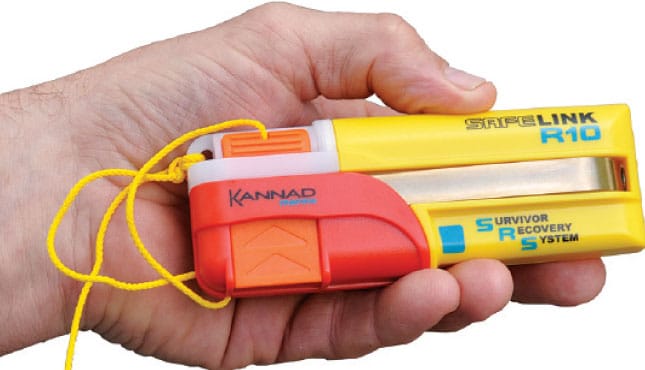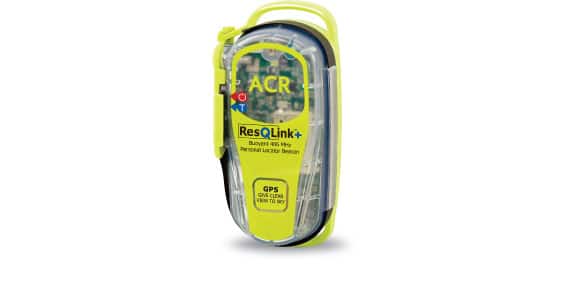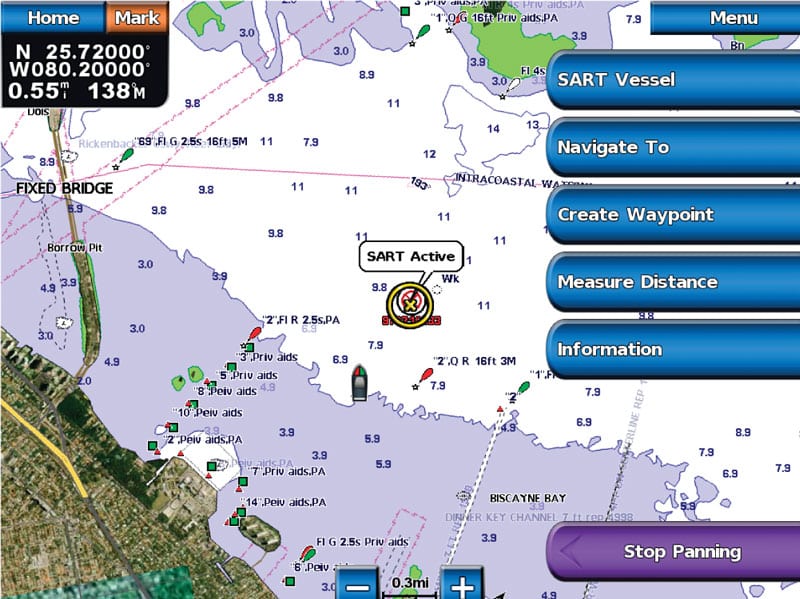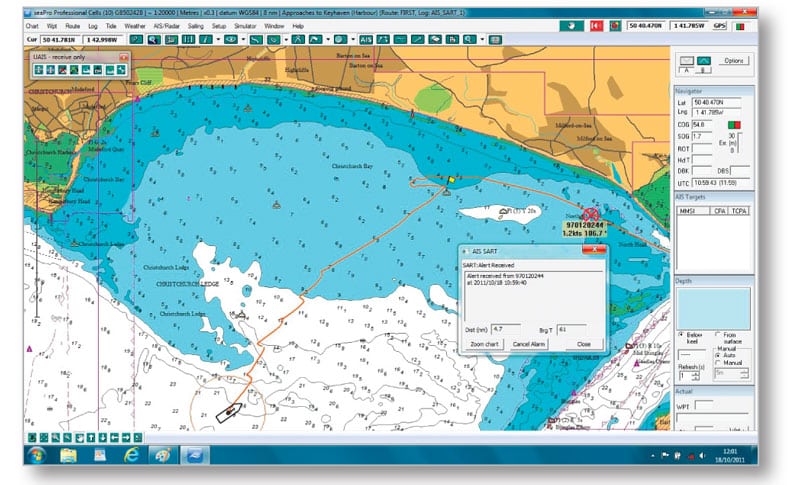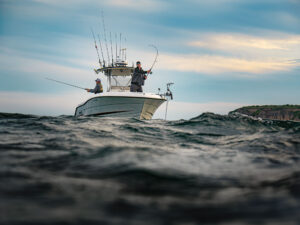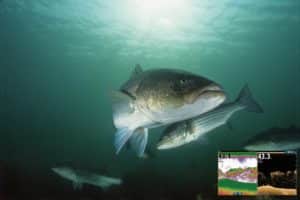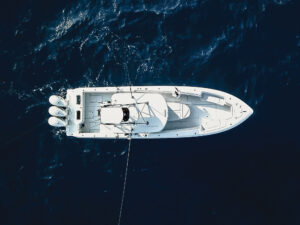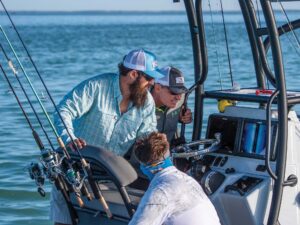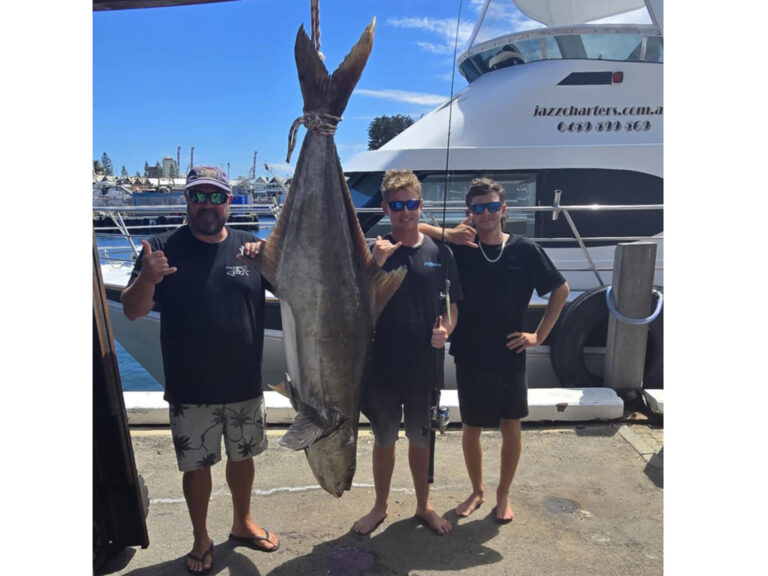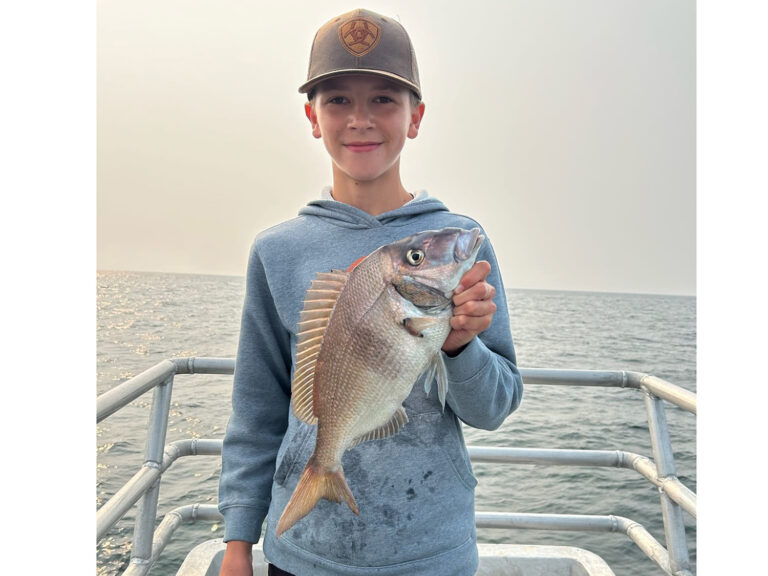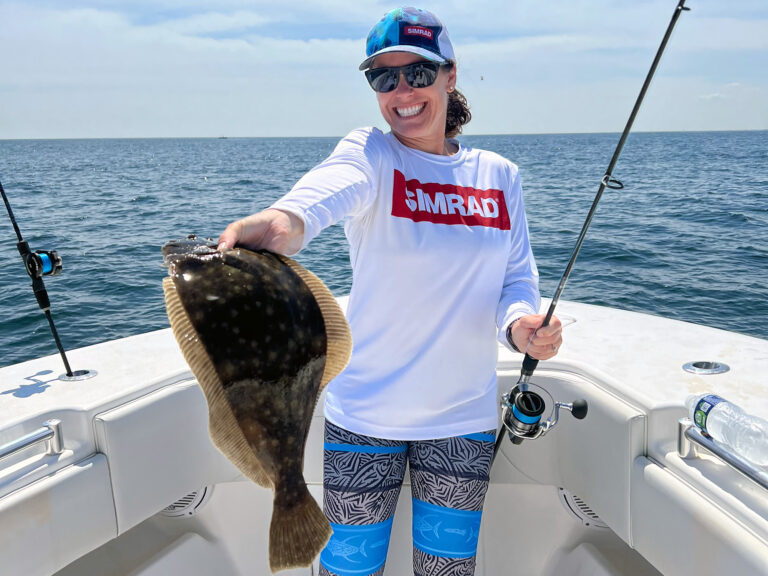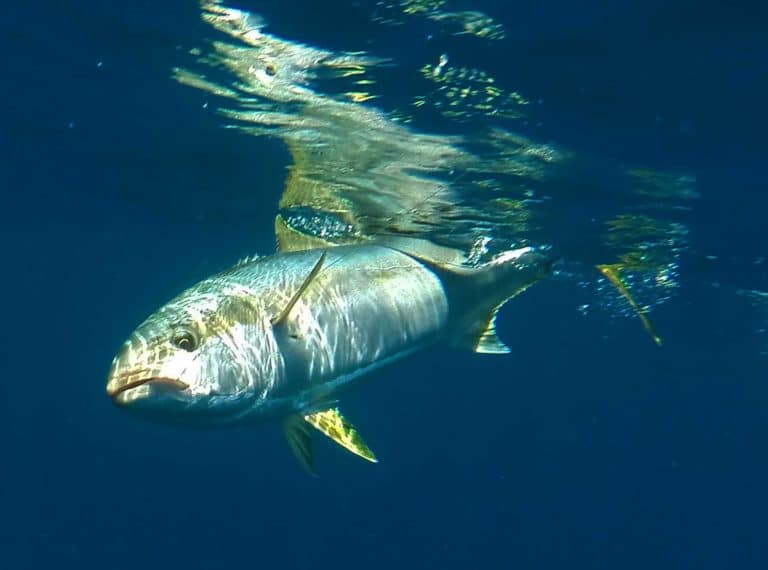Anglers who’ve heard about or seen pictures of a handheld device called an AIS SART (automatic identification system search and rescue transponder) — introduced at the 2011 Miami International Boat Show — might have wondered about the publicity. No such product hit store shelves, nor did anyone see a SART on the water.
That’s because the approval process by our Federal Communications Commission can take time. But this spring, two AIS SARTs — Kannad Marine’s SafeLink R10 ($349, kannadmarine.com) and Weatherdock’s easyRESCUE (easyais.de) — earned FCC approval.
These devices transmit an alert message, GPS-position information and an identification number to the plotters of nearby AIS-equipped vessels — possibly including your own — using the two AIS frequencies. Previous man-overboard systems, such as Raymarine’s LifeTag, sent information to a base unit aboard the victim’s vessel.
Kannad designed its SafeLink R10 as an attachment for personal flotation devices; the SART can broadcast its distress signal about four miles, depending on sea conditions. (Weatherdock did not respond to e-mailed questions about its larger easyRESCUE by press time.)
Will this new piece of equipment change the world of electronic safety for anglers? That depends on several factors, including the adoption of AIS aboard recreational vessels and the willingness of private boaters to help one another on the water.
When Help Is Near
Kannad’s Ross Wilkinson says his company designed the R10 primarily for crew members aboard large sail and power vessels, which could include sport-fishermen. The SART can quickly alert a captain when a crew member falls overboard.
“We’re not guaranteeing that other vessels in the area would perform a rescue,” says Wilkinson, Kannad’s business manager and global sales director. “So this is really to alert the boat that you fell off to come back and get you.”
The R10, chosen in April by West Marine as one of its top six products for 2012, transmits continuously for 24 hours and has a seven-year battery storage life. It can be used more than once on the same battery, unlike PLBs (personal locator beacons) and EPIRBs (emergency position-indicating radio beacons) — their batteries must be replaced before a second use. A victim must manually activate his or her R10, although some PFDs support automatic deployment.
A SART’s man-overboard alerts display differently depending on your plotter. Garmin issued a statement earlier this year saying all of its AIS-capable plotters can be optimized with a free software download to work properly with SARTs, including the R10 and its sister commercial-use product, McMurdo’s Smartfind S10.
That means Garmins display a red circle with a cross inside. Wilkinson says that Raymarine units tested by Kannad also displayed the correct icon and sounded an alarm. All plotter makers are expected to respond with software changes at least for their newer AIS-capable units. Older units see the distress signal as a ship icon (a triangle). “All [R10] units have a fixed MMSI (maritime mobile service identity) code that starts with 972,” Wilkinson says. “So that’s how it distinguishes itself from a normal vessel” to older plotters.
Plotters also can display distance and bearing to the target, projected drift, and time of last transmission. Garmin and Raymarine offer the option to navigate to the target, treating it as a waypoint with course information displayed. On an onboard PC, some software products (Kannad tested Euronav) show where the crew member entered the water and the victim’s projected drift.
Wilkinson adds that Digital Yacht recently released an AIS SART alarm that produces a sound when the R10 activates.
Reaching Farther
Besides the new SART, Kannad also makes PLBs and EPIRBs. Those beacons send digital distress signals to satellites that then transmit to emergency-rescue personnel. They must also be registered with the federal government through NOAA’s Search and Rescue Satellite Aided Tracking System (SARSAT).
SARTs were designed for crew situations and where a distress signal need travel only a short distance. For any other use, a PLB or EPIRB is generally recommended.
“SARTs are in the world of what I would call a closed system,” says Chris Wahler, product line manager for Cobham Commercial Systems, which makes ACR PLBs and EPIRBs. “If you can be recovered by the boat you fell off, they will prove to be pretty good … in time.”
Wahler says the assumption, by those talking about SARTs at this year’s Miami Boat Show, was that these beacons would instantly turn every vessel on the water into a rescue platform because they broadcast over AIS. “But we don’t see an overabundance of adoption [of AIS] on vessels, especially in the sport-fishing community,” he says.
PLBs constitute an open rescue system that contacts outside agencies that an event has taken place. “If you don’t have confidence in the vessels around you, you have to reach out beyond that,” Wahler says. “There’s no reason these devices can’t be used in conjunction with each other either. One thing a PLB doesn’t do is alert a captain that an event has taken place.”
None of these rescue beacons adequately work unless they can be deployed when you need them. Wearable devices must be worn. An R10 on a PFD does no good if a crew member falls overboard not wearing his life jacket.
“If you’re the only person on the vessel and you’re disconnected from the vessel, a PLB in your pocket is much better suited for your task,” Wahler says. “Anything left in the salon or in a drawer in the cockpit doesn’t do any good.”
